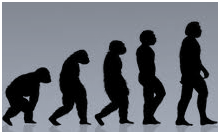What is Living?
Living means those organisms which have life. It is very difficult to explain but we can feel the existence of living organism. According to biologist living organism have following characteristics –

• Having external manifestation of action and interactions between environment protoplasm.
• Features of growth, reproduction, sensitivity, mutation, and evolution of complex organic cellular substances.
• Proper body shape and size, made up of cell consist of protoplasm.
• Having metabolism, nutrition, secretion, excretion, respiration, movement and locomotion, life cycle, senescence and death.
Structure:
Every living being are made up of smallest unit called cell. Many cells combine together to form tissue. Different tissues are associated together to develop organ. Organs are combined together to form system. Cell contains nucleus or nuclear material and protoplasm which contain different enzymes, protein for cellular metabolism.
Physiological activities:
Multiple divisions of cells causes increase in size– which is called growth. Having sensation due to change of environment. It is sensed by nervous system or different chemicals like hormones.
Some living organism like green plants can make their own food in presence of sun, water, carbon dioxidethus they are called autotrophic. They have special green pigment called chlorophyll to trap sunlight. But other living beings cannot make their own food, they are dependent upon autotrophs or other animal.Food is then absorbed by the body after digestion (process the food and make suitable for absorption). This is called heterotrophic nutrition. After digestion nutritional part is uptake by the body and provide to different cell and tissue.
During metabolism different enzymes are secreted from different gland and tissues. Beside that living organism may contain endocrine, exocrine glands.
Endocrine glands secret hormones, exocrine glands are sweat, sebum secreting gland.
After digestion and absorption the waste that produced during metabolism is removing from the body by the process called excretion. For this physiological activity some organism have specialized organ or tissue or lower animals release the excretory product by diffusion through cell.
Living beings take food for energy, but they do not get energy directly food unless they breakdown the food in presence of free oxygen or absence of free oxygen release the chemical energy into kinetic energy. This energy is then used by the body for running different physiological activities, locomotion, muscular function etc. Release of energy from food happens by the process called respiration.
Movement and locomotion is very common thing for living beings. Their need movement and locomotion because-
• In search of food.
• In search of shelter
• In search of protection
• In search of suitable environment
• In search of suitable partner for mating.
Reproduction is one of the most important parts of life cycle of living beings. Because everyone wants to increase their population and established their member in the society none of the living beings are immortal. Fusion of opposite sex gameteis called sexual reproduction. In lower organisms asexual reproduction is seen.
Starting from the birth and ending up to the death one living organism have to pass different stages of their life. This entire phase in known as life cycle of the living beings.
All the living beings have to change themselves in respect to the change in environment .For this they develop different changes in them, is called adaptation. When this change become very big and stays for long time, it gives rise to new organism. Thus every organism’s are originated from a common forefather.
From What is Living? to HOME PAGE
Recent Articles
-
Explain about Growth in Plants |Definition of Growth & Differentiation
Feb 27, 25 02:07 PM
Growth is a permanent increase in length or volume of an organism that brought upon by an increase in its dimensions due to synthesis of new protoplasmic material. -
Definition of Respiratory Quotient | calculation | Application | Plant
Dec 02, 24 12:09 AM
Definition of respiration quotient- the ratio of the carbon-dioxide evolved to that of the oxygen consumed by a cell, tissue, plants or animals in a given time is called respiratory quotient. It is us… -
Amphibolic Pathway | Definition | Examples | Pentose Phosphate Pathway
Jun 06, 24 10:40 AM
Definition of amphibolic pathway- Amphibolic pathway is a biochemical pathway where anabolism and catabolism are both combined together. Examples of amphibolic pathway- there are different biochemical… -
Respiratory Balance Sheet | TCA Cycle | ATP Consumption Process
Feb 18, 24 01:56 PM
The major component that produced during the photosynthesis is Glucose which is further metabolised by the different metabolic pathways like glycolysis, Krebs cycle, TCA cycle and produces energy whic… -
Electron Transport System and Oxidative Phosphorylation | ETC |Diagram
Feb 04, 24 01:57 PM
It is also called ETC. Electron transfer means the process where one electron relocates from one atom to the other atom. Definition of electron transport chain - The biological process where a chains…




New! Comments
Have your say about what you just read! Leave me a comment in the box below.